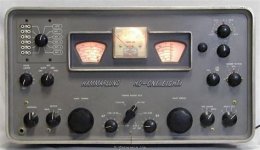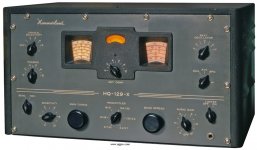Token
Member
Why are people recommending old boat anchor receivers that are well past their prime ? The OP said a portable HF was an option so I would suggest a Tecsun PL-880 or Sangean ATS-909X2.
The OP said "best HF" and "would prefer a desktop". Not all of the desktops being discussed are boat anchors (traditionally, "boat anchor" refers to a tube radio), but even so, a well maintained, good quality, "boat anchor" (of whatever definition) will outperform both of the portables you mention in almost every quantifiable way (and yes, I do own both of them).
Don't get me wrong, several of the current generation of portables punch well above their weight. They bring very good performance, sometimes at moderate pricing. The 909X (when paired with a decent antenna) is my favorite portable. But give me the option of ANY of the current portables on the market vs a good working Kenwood R5000, and I will take the R5000/JRC 5x5/R72/75 any time that an external antenna is available and size / weight are not the primary driving factors.
For that matter, I will take many a true boat anchor (tube type radio) over most portables, if a good external antenna is an option. A Drake R4B (with the right synth VFO), Hammarlund HQ-180A or HQ-200, Hallicrafters SX-100 or SX-122, all of these can be excellent performers, even at 60+ years old. But move into the solid state era, and the field busts wide open.
T!



